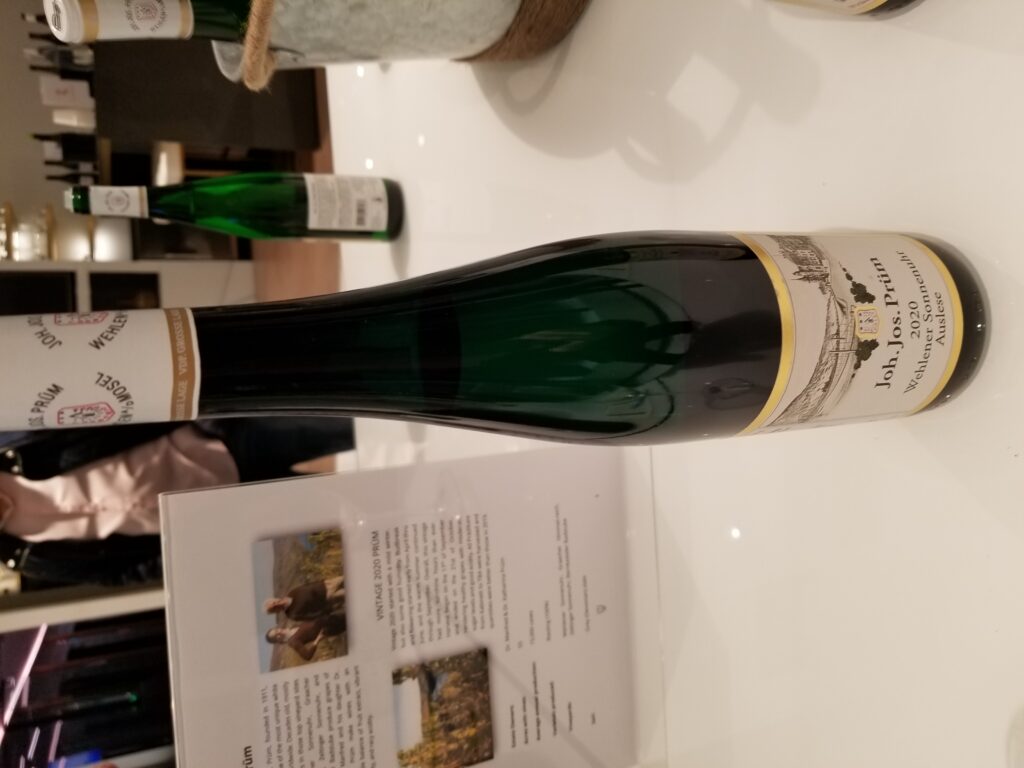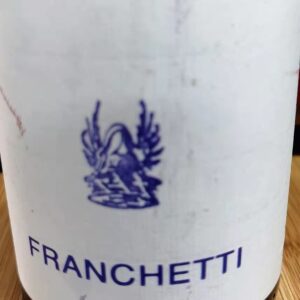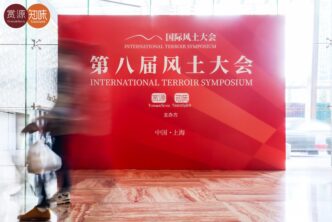(English) 2020 JJ Prum Whelener Sonnenuhr Auslese Gold Capsule 95+
Vini Franchetti 2019 Franchetti Terre Siciliane 96
By Robert Millman and Ian D’Agata
对不起这篇文章没有中文版,其他语言版本请见English。 For the sake of viewer convenience, the content is shown below in the alternative language. You may click the link to switch the active language.
JJ Prum 2020 Whelener Sonnenuhr Auslese Gold Capsule 95+

I tasted through the 2020 JJ Prum Rieslings at an industry event. The third in a series of very ripe vintages, 2020 nevertheless seemed less overtly marked by the heat than its two predecessors. The Kabinetts in particular are wonderfully fresh and lithe. The JJ Prum approach has always favored the upper pradikats and the 2020s are no exception. The Spatlesen were materially more interesting than the Kabinetts. The Auslesen, as is often the case with Prum, were still napping at this very early stage in their lives (perhaps 9-10 months in bottle). Like other growers in the Mosel, the Prums select several times in their vineyards allowing them to make reserve wines, almost always at the Auslese level, which are bottled as gold capsules and long gold capsules. (The Prums also bottle a small percentage of Spatlesen and Auslesen intended to go to the auction market which plays a very important role in German wine pricing.) It seems to me that the regular Prum bottlings have been less outstanding that they were 20 years ago. Perhaps this has been because the Prums have put more and more effort into selecting for the Gold Capsules wines. It is also true that the quality of Rieslings has improved significantly among many Mosel estates. It was evident to me that the 2020 Whelener Sonnenuhr Gold Capsule was as good as it has even been at Prum. Compared with the regular Auslese bottling, the Gold Capsule exhibited much brighter, even scintillating fruit with a fresh, invigorating attack on the palate which was truly stimulating. This is glorious solar energy translated into liquid “gold”. The tell-tale chewy minerality, shards of peach and lemon all function in harmonious interplay. The wine tastes so good now that it would not be a crime to drink a half bottle. Full bottles should be aged for a decade if possible. The JJ Prum Gold Capsules age almost indefinitely. Drinking window 2023-2040
Vini Franchetti 2019 Franchetti Terre Siciliane 96

It might seem incongruous, to say the least, to grow Petit Verdot on Etna. In fact, I can make a very strong case that a more enlightened set of Italian government officials should have never have allowed this to happen (or the planting of Pinot Noir, Chardonnay or any other international variety on as magical and absolutely unique terroir as Etna). After all, you don’t hear anybody in Burgundy clamoring to be allowed to plant Cabernet Sauvignon or Zinfandel, right? Nobody in Bordeaux’s looking to plant Torrontes or Sangiovese, correct? Ultimately, if Italy’s wines are forever playing second or third fiddle to the French a lot of that pain is sadly self-inflicted, and deserved. There simply comes a point in time when you have to grow up, take stock of who you are and where you are in life, be proud of it, and show the world that you can be the best at what you do. Clearly, it’s never that simple, and the truth of the matter is that international varieties, other by design or by mistake, have long been planted on Etna, including Grenache and Carignan (which does not mean, as is often written, that when a vineyard thought to be of Nerello Cappuccio is found to be of Carignan instead, that the two varieties are identical: what it means is that the original grapevine had been misidentified to begin with and that the vineyard was planted to Carignan all along). On Etna, an incredible place where the Nerello varieties and Carricante give wines like no others in the world, the argument can be made that there was no need to plant other grape varieties there. But it is what it is, and there’s not just Petit Verdot planted on Etna, but Cesanese d’Affile too (an Italian native grape but native to Lazio, not Etna). All of which, if it were about nothing else than creativity for creativity’s sake, would normally not deserve a second thought, or a line of writing, if it weren’t for the fact that Andrea Franchetti, the incredibly talented man who created and ran not one but two of Italy’s thirty best wine estates (Sicily’s Vini Franchetti, ex-Passopisciaro, and Tuscany’s Tenuta di Trinoro) and who sadly passed away last year, was the man (genius?) behind the planting of Petit Verdot and Cesanese d’Affile on Etna in his Guardiola holding on Etna. Way up at 1000 meters above sea level, where any less visionary person would have had trouble believing that either one of those two grapes could ever reach full maturity more than in three seasons out of ten, Andrea Franchetti fashioned his namesake wine by blending the two and coming up with something that is truly spectacular. And. In. Every. Vintage.
Usually a reported 90/10 to 95/5 blend (or something along those lines) of the two grapes (the 2019 is 97% Petit Verdot and 3% Cesanese d’Affile), the Franchetti is simply a mesmerizing wine quite like nothing else in Italian red wine. And from a man whose Etna reds made with the Nerello varieties are also amongst Italy’s best red wines. The 2019 Franchetti Terre Siciliane is deep ruby in colour, with knockout aromas and flavours of ripe red cherry, sweet spices, ink, black pepper, and tobacco. In the mouth, it showcases silky tannins and an opulent yet lifted mouthfeel. The finish goes on and on offering repeating nuances of sweet red fruit and cinnamon. For those who know, there is a lot of similarity between this wine’s suave, sexy texture and those that Franchetti makes at Tenuta di Trinoro. Here the winemaker’s signature is evident but in this case, the wine is so delicious and profoundly impressive you just can’t say anything else but bravo! Franchetti the wine is an amazing effort that is meant to represent Franchetti the man’s vision of what a full-bodied Etna rosso wine could be like, given that the local varieties deliver wines that have more in common with Pinot Noir than Syrah. Given that Petit Verdot is not exactly viewed as a noble variety (appreciated mostly for the deep colour it gives but complexity is another matter) that this wine is what it is speaks volumes, yet again, about Andrea Franchetti’s talent and insight. Drinking window: 2025-2032.



 English
English


